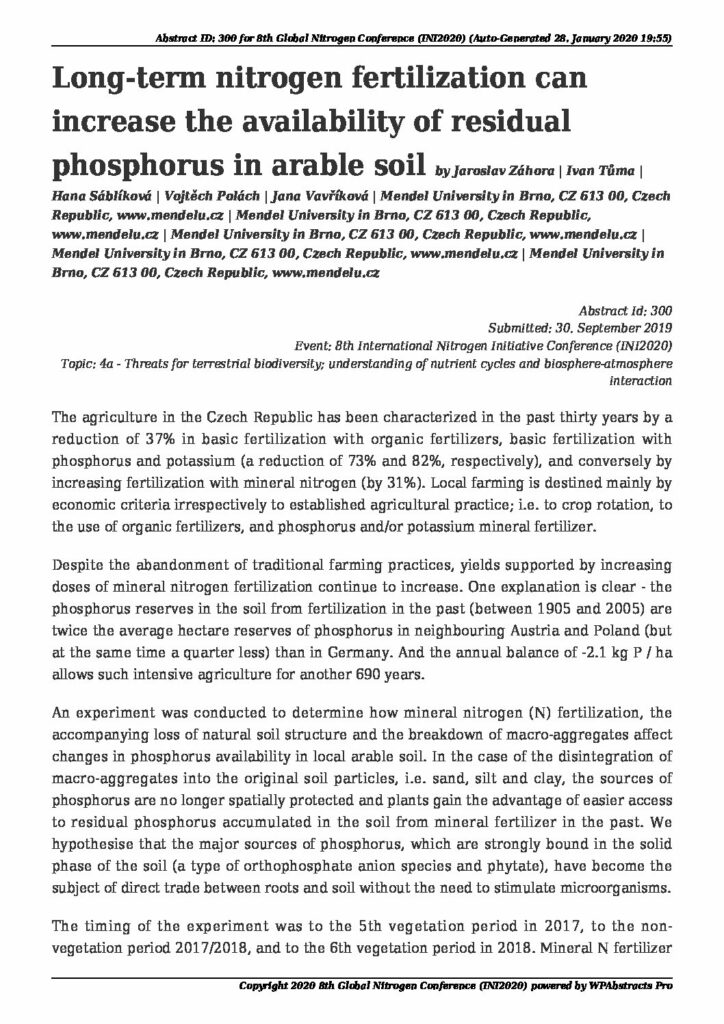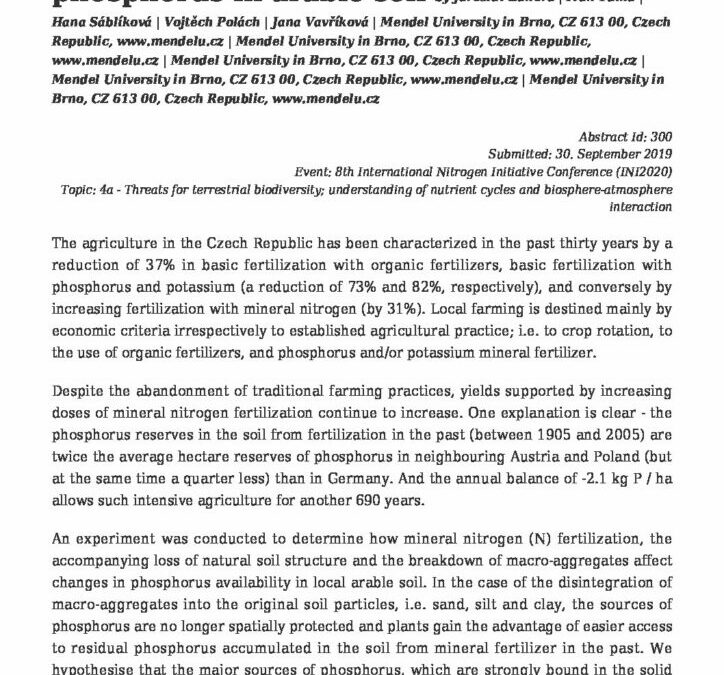Long-term nitrogen fertilization can increase the availability of residual phosphorus in arable soil

The agriculture in the Czech Republic has been characterized in the past thirty years by a reduction of 37% in basic fertilization with organic fertilizers, basic fertilization with phosphorus and potassium (a reduction of 73% and 82%, respectively), and conversely by increasing fertilization with mineral nitrogen (by 31%). Local farming is destined mainly by economic criteria irrespectively to established agricultural practice; i.e. to crop rotation, to the use of organic fertilizers, and phosphorus and/or potassium mineral fertilizer.
Despite the abandonment of traditional farming practices, yields supported by increasing doses of mineral nitrogen fertilization continue to increase. One explanation is clear – the phosphorus reserves in the soil from fertilization in the past (between 1905 and 2005) are twice the average hectare reserves of phosphorus in neighbouring Austria and Poland (but at the same time a quarter less) than in Germany. And the annual balance of -2.1 kg P / ha allows such intensive agriculture for another 690 years. An experiment was conducted to determine how mineral nitrogen (N) fertilization, the accompanying loss of natural soil structure and the breakdown of macro-aggregates affect changes in phosphorus availability in local arable soil. In the case of the disintegration of macro-aggregates into the original soil particles, i.e. sand, silt and clay, the sources of phosphorus are no longer spatially protected and plants gain the advantage of easier access to residual phosphorus accumulated in the soil from mineral fertilizer in the past.
We hypothesise that the major sources of phosphorus, which are strongly bound in the solid phase of the soil (a type of orthophosphate anion species and phytate), have become the subject of direct trade between roots and soil without the need to stimulate microorganisms.
